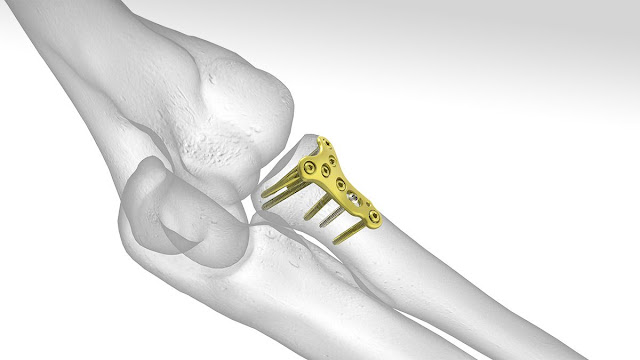Global Elbow Replacement Market is Anticipated to Witness High Growth Owing to Increasing Prevalence of Arthritis
The global elbow replacement market has been gaining significance due to the increasing prevalence of arthritis, especially rheumatoid arthritis, across the globe. Elbow replacement is a surgical procedure to replace the inner or outer parts of the elbow joint with artificial parts made from metals, plastic or other materials. The procedure helps to relieve pain and improve arm movement and elbow function in patients suffering from severe arthritis or damage to the elbow joint. Elbow replacement devices such as total, partial and resurfacing elbow implants are commonly used to restore normal elbow motion. The implant materials include metal alloys like cobalt chromium and titanium as well as polyethylene and ceramic components. The rising geriatric population suffering from arthritis along with advancements in implant design and surgical techniques are projected to drive the adoption of elbow replacement surgeries and implants in the coming years.
The Global elbow replacement market is estimated to be valued at US$ 144.2 MN in 2024 and is expected to exhibit a CAGR of 4.2% over the forecast period 2024 to 2031.
Key Takeaways
Key players operating in The
Global Elbow Replacement Market are Wright Medical Group N.V., Integra
LifeSciences Corporation, Zimmer Biomet, Johnson & Johnson Service, Inc.,
Corin Group, Stryker, Smith+Nephew, DJO, LLC, Arthrex, Inc., Limacorporate
S.p.A., Acumed LLC, CONMED Corporation, implantcast GmbH, BioMedtrix, LLC, Meril
Life Sciences Pvt. Ltd., and RCH ORTHOPAEDICS. Wright Medical Group N.V. is one
of the major players offering a broad portfolio of elbow arthroplasty solutions
like the MRP Total Elbow Replacement System and the Evolution Total Elbow
System.
The increasing adoption of minimally invasive surgical techniques and
advancements in elbow prosthesis design present significant growth
opportunities for companies. Shorter recovery time and improved implant
functionality are expected to drive demand for novel partial and resurfacing
elbow implants.
Key players are focused on expanding their international footprints in high
growth markets like Asia Pacific and Latin America. Strategic partnerships with
hospitals and distribution agreements with medical device dealers are helping
companies strengthen their global presence and service offerings.
Market Drivers
The increasing geriatric population worldwide vulnerable to osteoarthritis and
rheumatoid arthritis is a major driver propelling demand for elbow
replacements. According to estimates, the number of people aged 60 years and
above will double to nearly 2.1 billion by 2050. Such individuals are at higher
risks of orthopedic disorders like elbow arthritis.
Advancements in implant design and biomaterials are leading to enhanced
prosthesis functionality and longevity. Newer implants offer bone-preserving
options, shorter recovery periods and improved postoperative mobility. This is
encouraging more patients to opt for elbow replacement surgery.
Market Restrain
The high costs associated with elbow replacement surgery and implants is a key
restraint. Elbow replacement devices require sophisticated manufacturing
technologies and stringent regulatory approvals which makes them expensive.
This limits their availability and adoption in low and middle-income countries.
The risk of complications including infection, implant loosening and restricted
mobility with some implants also discourages patients and physicians. Surgical
expertise and strict postoperative care requirements further add to the
challenges.
Segment Analysis
Initial phase replacement was dominated by hemiarthroplasty, which involves
resurfacing of the inner surface of the elbow joint. However, total elbow
replacement has emerged as the preferred procedure as it provides better pain
relief and improves elbow function. Cemented implants were commonly used
initially but cementless implants are gaining popularity owing to less chances
of cement wear debris and loosening of implant over time. Linked or hinged implants
are dominating the market currently as they better replicate the natural elbow
motion.
Global Analysis
North America holds the largest share in global elbow replacement market due to
increasing healthcare expenditure and awareness about advanced treatment
options. Asia Pacific is expected to witness fastest growth during the forecast
period owing to rising geriatric population, improving access to healthcare
facilities and increasing orthopedic procedures. In terms of volume, Asia
Pacific elbow replacement market is projected to reach close to 100 thousand
procedures by 2031.
Get More
Insights On Elbow
Replacement Market



Comments
Post a Comment